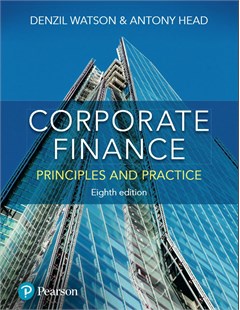Financial and Managerial Accounting
Financial and Managerial Accounting continuously evolves to meet the needs of today's learner. This edition's new structure is based on research about how to deliver content to students and how to mirror the way instructors have told us they teach.
2011
Abstract
Financial and Managerial Accounting continuously evolves to meet the needs of today's learner. This edition's new structure is based on research about how to deliver content to students and how to mirror the way instructors have told us they teach.
+ Chapter 1: Uses of Accounting Information and the Financial Statements
+Chapter 2: Analyzing Business Transactions
+Chapter 3: Measuring Business Income
+Chapter 4: Completing the Accounting Cycle
+Chapter 5: Financial Reporting and Analysis
+Chapter 6: The Operating Cycle and Merchandising Operations
+Chapter 7: Internal Control
+Chapter 8: Inventories
+Chapter 9: Cash and Receivables
+Chapter 10: Current Liabilities and Fair Value Accounting
+Chapter 11: Long-Term Assets
+Chapter 12: Contributed Capital
+Chapter 13: Long-Term Liabilities
+Chapter 14: The Corporate Income Statement and the Statement of Stockholders’ Equity
+Chapter 15: The Statement of Cash Flows
+Chapter 16: Financial Performance Measurement
+Chapter 17: Partnerships+Chapter 18: The Changing Business Environment
+Chapter 19: Cost Concepts and Cost Allocation
+Chapter 20: Costing Systems: Job Order Costing
+Chapter 21: Costing Systems: Process Costing
+Chapter 22: Value-Based Systems: ABM and Lean
+Chapter 23: Cost Behavior Analysis
+Chapter 24: The Budgeting Process
+Chapter 25: Performance Management and Evaluation
+Chapter 26: Standard Costing and Variance Analysis
+Chapter 27: Short-Run Decision Analysis
+Chapter 28: Capital Investment Analysis
 |  |
| |
| Corporate Finance: Principles and Practice | Public Finance and Public Policy |
Thứ Sáu, 22:18 03/03/2023
Copyright © 2018 Hanoi University of Industry.